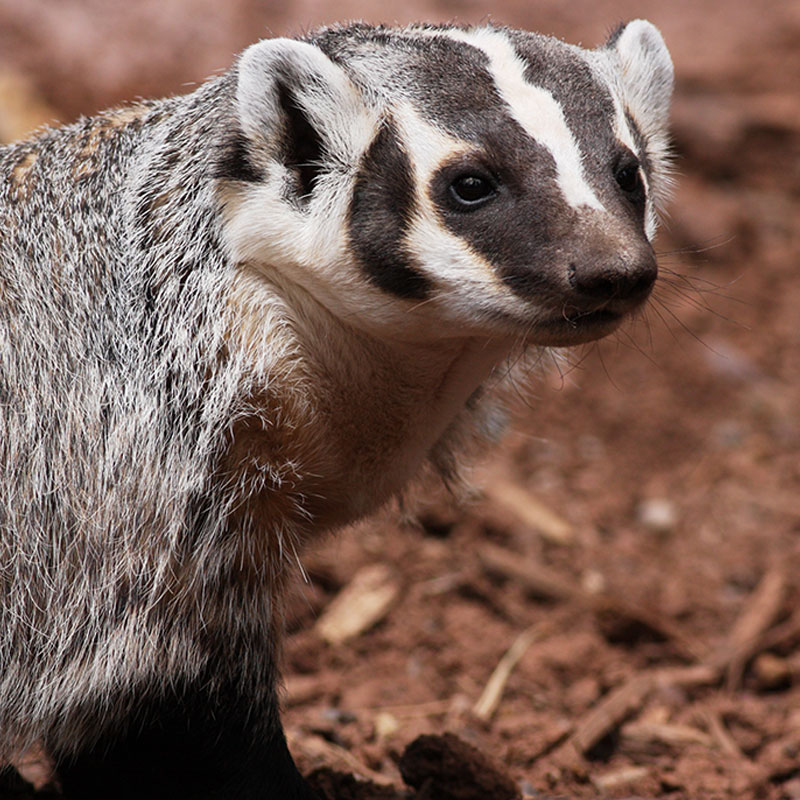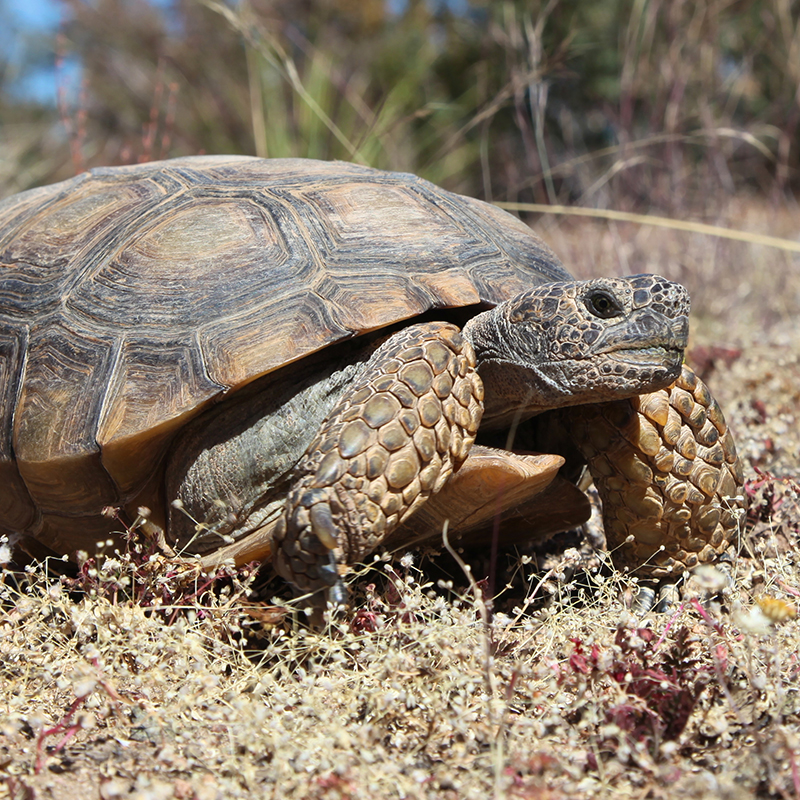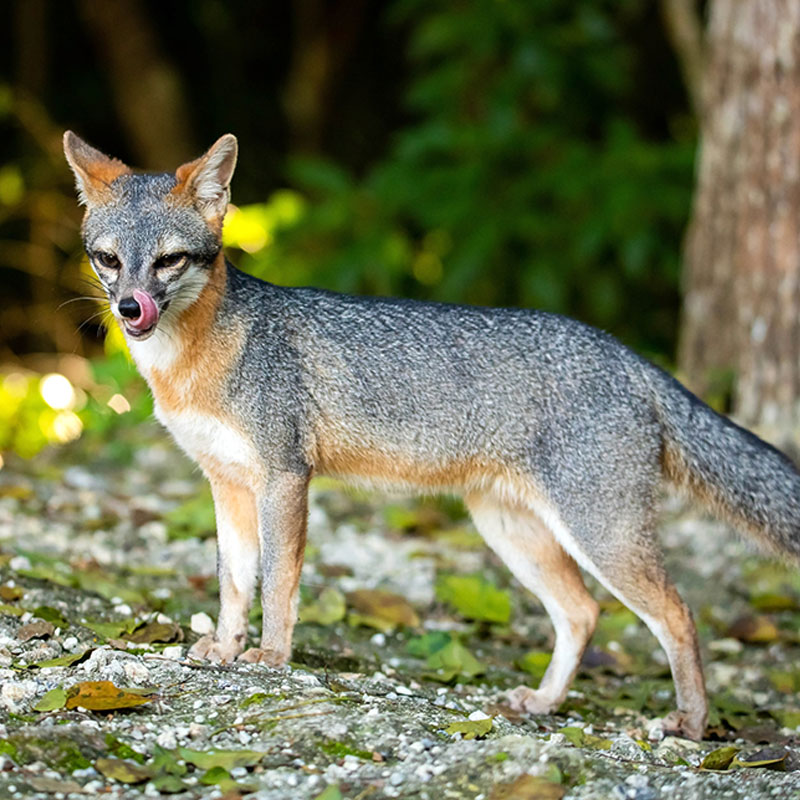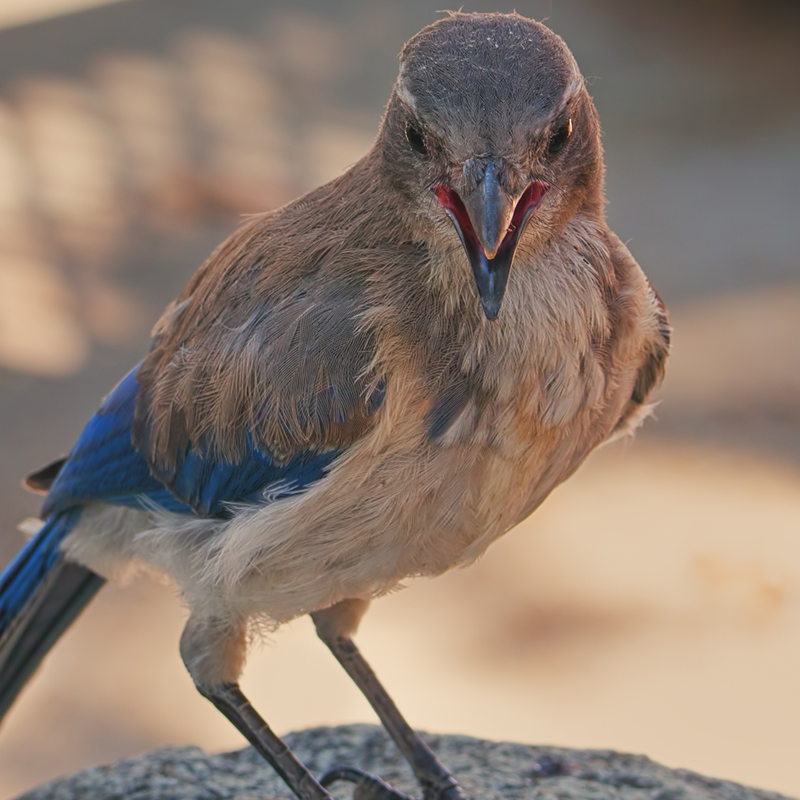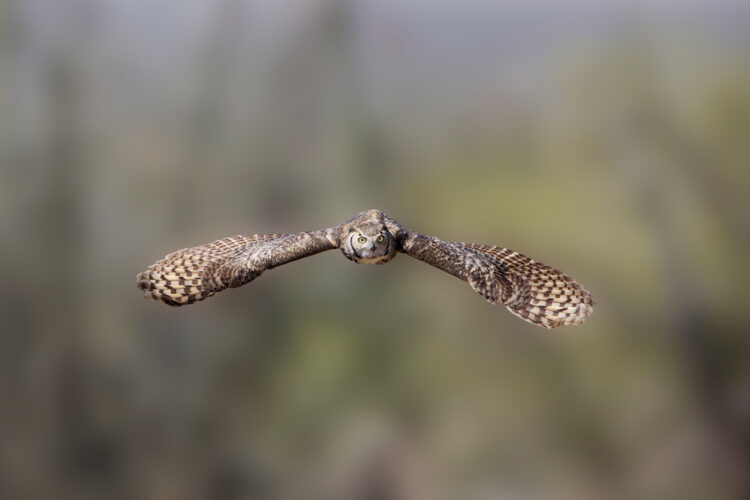
The great horned owl is the second largest owl in California. The “horns” of the owl are actually only feather tufts, colored brown with the rest of the body. They also have some spotted coloration in darker shades of brown. The great horned owl is one of the most common owls, equally at home in deserts, wetlands, forests, grasslands, backyards and cities.
Great horned owls are fierce predators and are often referred to as “tigers of the sky”. They can take large prey, including raptors such as ospreys, falcons, and other owls. They mainly eat squirrels, jackrabbits, skunks and other small mammals and birds. They also eat much smaller items such as rodents, frogs, and scorpions, which they swallow whole and later regurgitate in owl pellets. They have excellent hearing, specially adapted feathers that dissipate air flow, facilitating silent flight, plus powerful feet and talons.
Females will usually lay 2-3 eggs once a year. These eggs will be incubated by both parents. They will hatch in 4 weeks, and will mature and leave the nest in 1-2 months.



